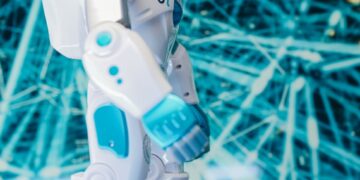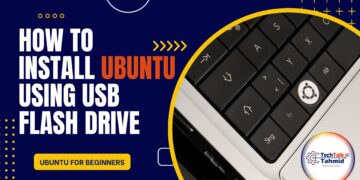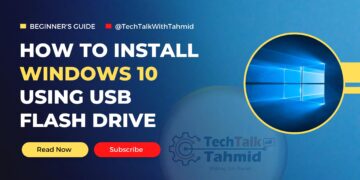The tech industry is abuzz with the promise of a new era in personal computing. Headlines declare the arrival of AI-powered PCs and proactive agents, touting them as the next great paradigm shift, poised to revolutionize how we interact with our devices. From dedicated AI accelerators like NPUs to intelligent software designed to anticipate our every need, the vision painted is one of seamless efficiency, hyper-personalization, and unprecedented productivity. Yet, amidst the fervent excitement and bold predictions, a critical question emerges: are these advancements truly a fundamental transformation that will impact the average user’s daily life, or are we witnessing another instance of overhyped features that will only find niche adoption?
The promise of AI PCs and proactive agents
At the core of this discussion lies the concept of the “AI PC.” This isn’t just a computer that runs AI software; it’s a machine built from the ground up with dedicated hardware, specifically Neural Processing Units (NPUs), designed to handle AI workloads efficiently. This allows for local AI processing, offering benefits like enhanced privacy, reduced latency, and the ability to run AI tasks offline. Complementing this hardware are proactive agents – intelligent software layers that go beyond simple voice commands. These agents aim to learn user habits, anticipate needs, and automate complex tasks, from managing your schedule to summarizing documents or even suggesting creative ideas, all without explicit instruction.
The potential benefits are compelling. Imagine a PC that automatically optimizes your video conferencing quality based on your network and environment, generates meeting notes in real time, or proactively sorts your emails and prioritizes tasks. For creative professionals, AI PCs could accelerate video rendering, image manipulation, and complex 3D modeling tasks. For everyone, the promise is a more intuitive, less intrusive computing experience where the device works *for* you, freeing up cognitive load and boosting overall efficiency by handling routine operations seamlessly in the background.
The current reality for the average user
While the vision is alluring, the present-day impact on the average computer user tells a different story. For many, daily computing tasks revolve around web browsing, email, word processing, streaming content, and perhaps casual gaming. Modern PCs, even those without dedicated NPUs, already handle these operations with ease and speed. The immediate value proposition of an AI PC for these core activities often feels incremental rather than revolutionary. Is a slightly faster Copilot response or a marginal improvement in background blur during a video call enough to justify a significant hardware upgrade?
Furthermore, the software ecosystem that fully leverages these new AI capabilities is still nascent. Developers need time to integrate NPU support and design applications that truly harness the power of proactive agents in ways that are genuinely useful and not just gimmicky. The “killer app” that makes an AI PC indispensable for the masses might still be on the horizon. For now, the cost of entry for a new AI-enabled machine, coupled with the limited immediately apparent benefits for everyday tasks, means many average users remain content with their existing setups.
Niche innovation versus mass market transformation
Despite the current limitations for the average user, it is critical to acknowledge where AI PCs and proactive agents *are* making a significant impact. For specific professional and enterprise applications, these technologies are already proving transformative. Content creators, data scientists, software developers working on AI models, and businesses requiring advanced on-device security or highly customized automation are finding immediate value. In these specialized niches, the enhanced performance, privacy, and efficiency offered by local AI processing and intelligent automation are not just “nice to have” but are becoming essential competitive advantages.
The distinction lies in recognizing that not every technological advancement needs to be a mass-market revolution from day one. Many groundbreaking technologies started in niche applications before evolving into widespread consumer products. The trajectory of AI PCs might follow a similar path, gradually expanding its utility as software catches up with hardware, and as developers uncover truly compelling applications that resonate with a broader audience. The journey from niche innovation to mass market transformation is often a lengthy one.
| Feature Area | Current PC Experience | AI-Powered PC Potential |
|---|---|---|
| Productivity | Manual scheduling, basic search, separate apps | Proactive meeting setup, intelligent document summarization, context-aware suggestions |
| Content Creation | CPU/GPU heavy rendering, manual editing workflows | Accelerated AI filters, real-time style transfer, smart object removal, automated editing assistance |
| Security & Privacy | Antivirus, firewall, cloud-dependent AI features | Proactive threat detection at endpoint, behavioral analysis, local AI for enhanced privacy |
| User Interface | Click/type commands, explicit instructions | Natural language interaction, context-aware suggestions, anticipating user needs |
The long-term trajectory: evolution, not revolution (yet)
Rather than a sudden, overnight revolution for every user, the emergence of AI-powered PCs and proactive agents is best understood as a significant evolutionary step in computing. The hardware is now capable, laying a robust foundation for future innovations. It often takes time for the software ecosystem to mature and fully exploit new hardware capabilities, much like early smartphones required years for developers to unlock their full potential through apps. As NPUs become more powerful and ubiquitous, and as AI models become more sophisticated and efficient, the cost-benefit analysis for the average user will undoubtedly shift.
This phase is about building the necessary infrastructure and enabling developers to experiment and innovate. It is highly probable that over the next few years, compelling applications and experiences will emerge that truly integrate AI into our daily computing in ways that feel indispensable. The “iPhone moment” for AI PCs – where a single, killer application or user experience captures the public’s imagination and makes the technology a must-have – may still be ahead. For now, we are witnessing the groundwork being laid for a future computing paradigm, one that promises much, but whose full impact on the average user is yet to fully materialize.
In conclusion, the debate over whether AI-powered PCs and proactive agents represent a true computing paradigm shift or mere overhype for the average user reveals a nuanced reality. While these technologies hold immense promise and are already delivering tangible benefits within specialized professional and enterprise environments, their immediate, transformative impact on the daily lives of the average computer user remains somewhat limited. The current software ecosystem is still maturing, and the “killer application” that makes an AI PC an indispensable upgrade for everyone is arguably still in development. It’s clear that the hardware capabilities, such as NPUs, are laying crucial groundwork for future innovation.
Therefore, it’s not simply hype, but rather an *evolutionary phase* that is building the foundation for what could eventually become a revolutionary shift. The seeds of a new computing era have been sown, offering tantalizing glimpses of a more intelligent, intuitive, and efficient future. For now, the average user can expect gradual improvements and increasingly clever features. However, for AI PCs and proactive agents to truly permeate the mainstream and redefine personal computing for all, sustained innovation, compelling software development, and a clear demonstration of indispensable value will be required over the coming years.


















